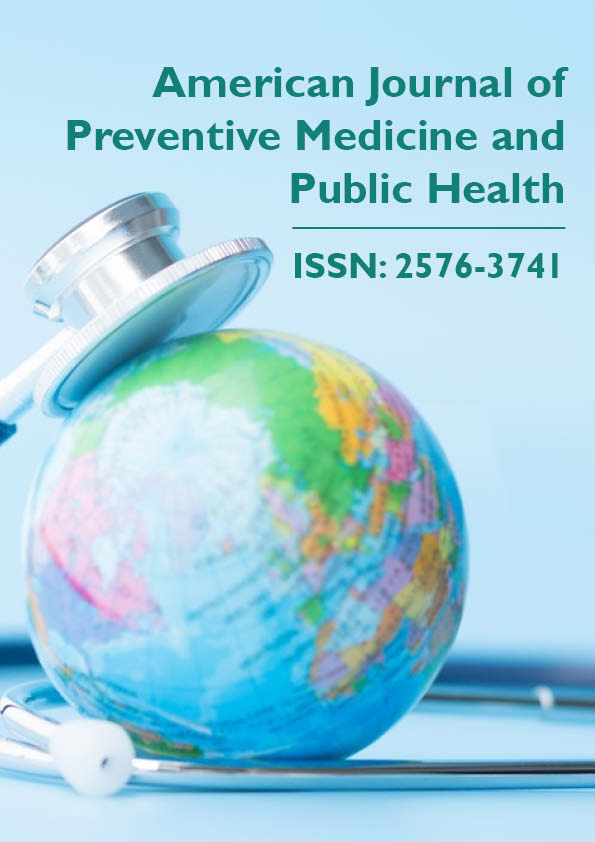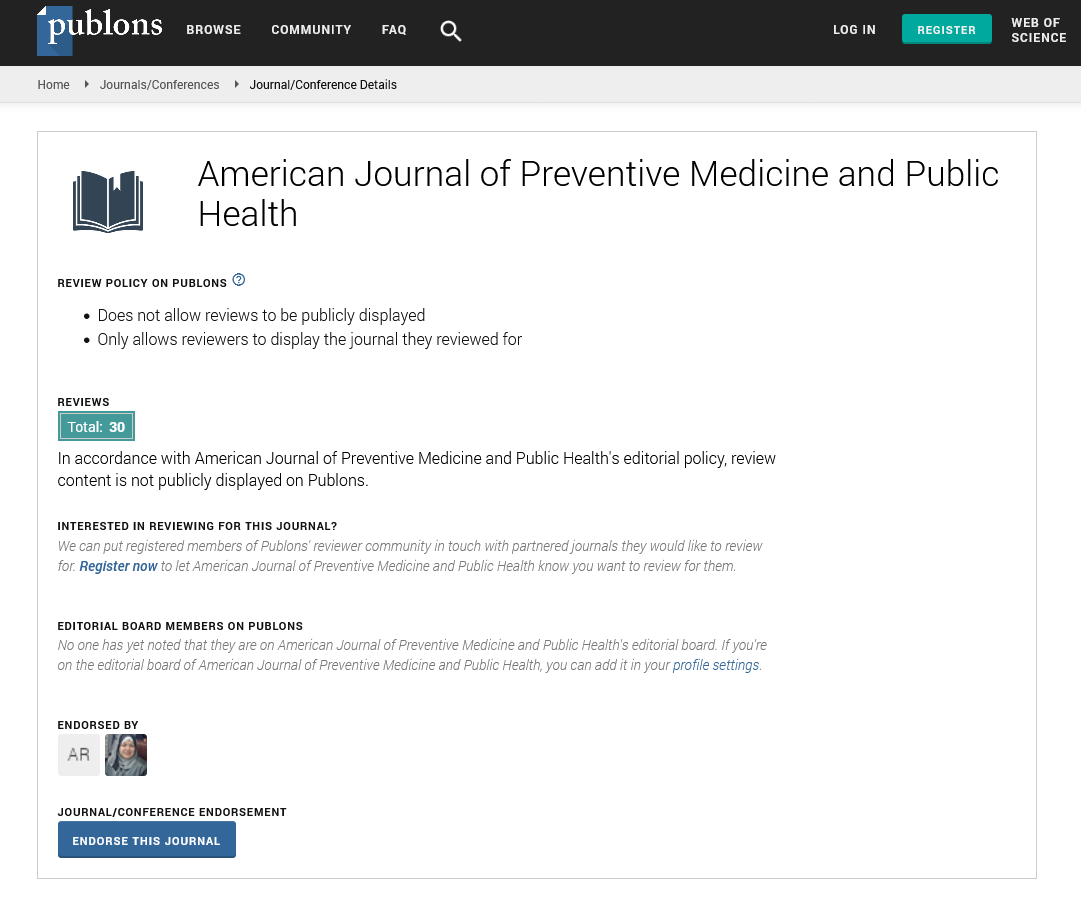Perspective - American Journal of Preventive Medicine and Public Health (2022)
Basic Disciplines of Environmental Health
James C Smith*James C Smith, Department of Family and Community Health, The University of Maryland School of Nursing, Baltimore, USA, Email: smithjames519@gmail.com
Received: 10-Jun-2022, Manuscript No. AJPMPH-22-70740; Editor assigned: 13-Jun-2022, Pre QC No. AJPMPH-22-70740 (PQ); Reviewed: 28-Jun-2022, QC No. AJPMPH-22-70740; Revised: 04-Jul-2022, Manuscript No. AJPMPH-22-70740 (R); Published: 11-Jul-2022
Description
The area of public health known as environmental health is focused on how the built and natural environments affect human health. For the sake of human health, environmental health places a special emphasis on the built and natural environments. Environmental science, toxicology, environmental epidemiology, and environmental and occupational medicine are the main subfields of environmental health.
Disciplines
The five fundamental fields that most frequently contribute to the field of environmental health are environmental epidemiology, toxicology, exposure science, environmental engineering, and environmental law. Each of these five fields offers a distinctive viewpoint on the problems and solutions pertaining to environmental health.
Environmental epidemiology researches how environmental exposures—such as those to pollutants, radiation, microorganisms, etc.—affect people’s health. Environmental epidemiology frequently uses observational studies, which merely record exposures that have already occurred, because it is immoral to expose people to substances that are known or suspected to be harmful. Environmental epidemiology’s inability to use experimental study designs is a drawback; however this field directly measures effects on human health rather than estimating effects from animal studies. Environmental epidemiology, broadly considered, is the study of how variables in the external environment—physical, biological, and chemical—affect human health. Additionally, by focusing on particular individuals or communities that have been exposed to various ambient environments, epidemiology in our environment seeks to shed light on the connections between environmental physical, biological, and chemical components and human health.
Toxicology investigates how environmental exposures result in particular health consequences, typically in animals, in order to better understand potential health effects in people. Because they can employ animal subjects, toxicology has the advantage of being able to conduct randomised controlled trials and other experimental research. The interpretation of the findings of animal studies for their implications for human health can be very unclear due to the many biological distinctions between animals and humans.
By identifying and quantifying exposures, exposure science investigates how often people are exposed to environmental pollutants. By better describing environmental exposures that may result in a specific health outcome, identifying common exposures whose health outcomes may be better understood through a toxicology study, or using exposure science in a risk assessment to determine whether current exposure levels may exceed recommended levels, exposure science can be used to support environmental epidemiology. Exposure science has the advantage of being able to measure exposures to certain chemicals very precisely, but it does not produce any data on health outcomes like environmental epidemiology or toxicology do.
Environmental engineering uses scientific and engineering principles to protect human populations from harmful environmental consequences, to safeguard the environment from the potentially harmful effects of human and natural activities, and to enhance environmental quality in general. Environmental law refers to the body of common and customary rules, ordinances, regulations, and treaties that deal with how human activity affects the environment.
A risk assessment for particular chemicals, combinations of chemicals, or other risk factors can be carried out using data from epidemiology, toxicology, and exposure research to evaluate whether an exposure constitutes a serious danger to human health (exposure would likely result in the development of pollution-related diseases). This can then be used to create and implement environmental health policies that, for instance, control chemical emissions or provide guidelines for good hygiene. Engineering and legal actions can be coupled to provide risk management to reduce, track, and manage the effects of exposure to safeguard human health and accomplish the goals of environmental health policy.
Copyright: © 2022 The Authors. This is an open access article under the terms of the Creative Commons Attribution NonCommercial ShareAlike 4.0 (https://creativecommons.org/licenses/by-nc-sa/4.0/). This is an open access article distributed under the terms of the Creative Commons Attribution License, which permits unrestricted use, distribution, and reproduction in any medium, provided the original work is properly cited.







